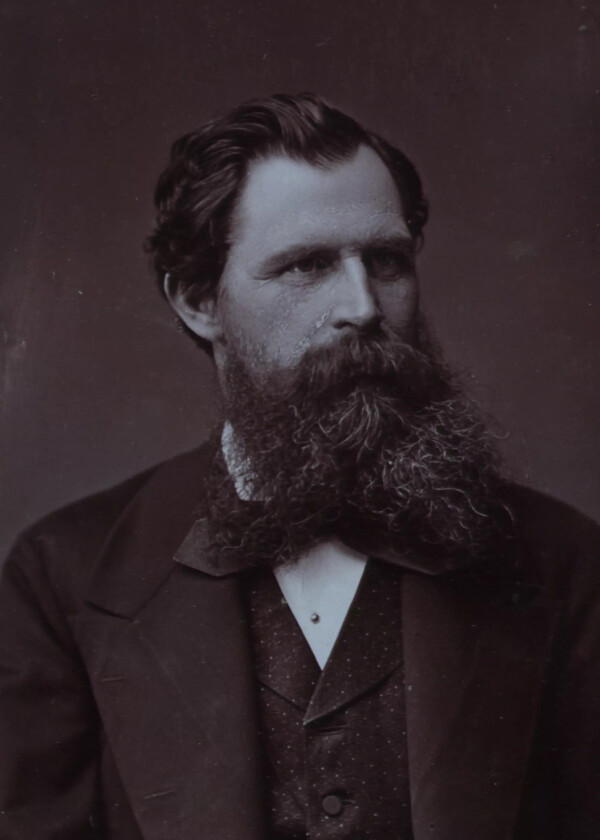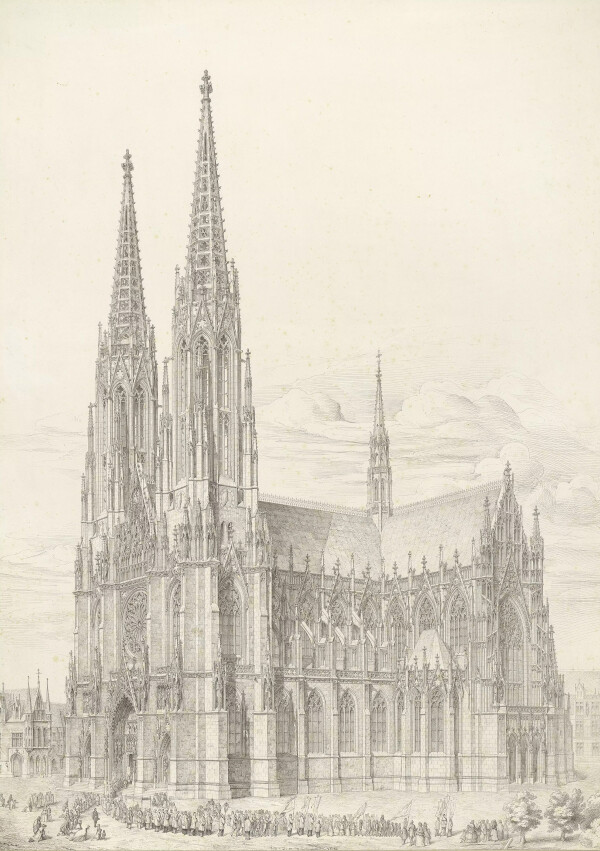Heinrich Ferstel

Heinrich Ferstel photographed by Josef Löwy, around 1880
© Wien Museum

Heinrich Ferstel: Architectural drawing for the Votive Church, 1859, Wien Museum
© Wien Museum
Heinrich Ferstel was one of the most important architects of the Ringstraße period. He for instance designed and built the Votivkirche, the new building of the University of Vienna, the School of Arts and Crafts and the Austrian Museum of Art and Industry.
Heinrich Ferstel, born in Vienna in 1828, simultaneously attended the Polytechnic Institute and the Vienna Academy of Fine Arts for several years. He studied architecture with Eduard van der Nüll and August Sicardsburg, among others, but did not graduate until 1850, as the Revolutions of 1848 had forced him to interrupt his studies. He went on study trips and worked at his uncle’s studio for a few years, gathering practical experience. From 1853, Ferstel worked as an independent architect.
A Builder and Architect of the Ringstraße
Ferstel participated in numerous competitions in Austria and abroad. In 1854, when he was only 26 years old, he won the competition for the building of the Votivkirche, erected to give thanks for the failure of the attempt to assassinate Emperor Franz Joseph I. Ferstel subsequently won many other monumental commissions for public buildings that were erected in Vienna’s city center or along the Ringstraße – including the building that originally housed the national bank and the stock exchange (now Palais Ferstel), the Austrian Museum of Art and Industry, the Vienna School of Arts and Crafts and the new University building, for which Gustav Klimt and Franz Matsch were later commissioned to create the ceiling decorations.
A Professor, Author and Jury Member
The architect taught at the school of architecture at the Vienna Polytechnic Institute from 1866 and became its rector in 1880. Ferstel also wrote reference works, including Das bürgerliche Wohnhaus und das Wiener Zinshaus with his co-author Rudolf Eitelberger, who would later become the director of the Museum of Art and Industry. Ferstel advocated a reform of the housing sector. In the 1870s, he was a member of the editorial staff of the journal Allgemeine Bauzeitung, together with Theophil Hansen and Friedrich Schmidt. Ferstel also acted as a jury member for architectural competitions, for instance judging the drafts and plans for Vienna’s State Opera, City Hall and Central Cemetery.
International Recognition and Premature Death
Ferstel won many Austrian and international awards as an architect and was a member of many clubs and associations, such as the Cooperative of Visual Artists in Vienna. The city of Vienna made him an honorary citizen in 1879 in recognition of his extraordinary achievements. The architect did not live to see the completion of the University of Vienna; Ferstel died in Vienna in 1883, aged only 55.
Literature and sources
- Architektenlexikon. Wien 1770–1945. Heinrich Ferstel. www.architektenlexikon.at/de/1051.htm (04/20/2020).
- Allgemeine Bauzeitung, 1883, S. 81-87.
- Felix Czeike (Hg.): Historisches Lexikon Wien, Band 2, Vienna 1993, S. 284-285.
- Österreichische Akademie der Wissenschaften (Hg.): Österreichisches Biographisches Lexikon 1815–1950, Band 1, Vienna 1994.
- Österreichische Kunst-Chronik, Nummer 23 (1884), S. 461-465.
- Andreas Beyer, Bénédicte Savoy, Wolf Tegethoff (Hg.): Allgemeines Künstler-Lexikon. Die bildenden Künstler aller Zeiten und Völker, Band XXXIX, Berlin - New York 2003, S. 174.

